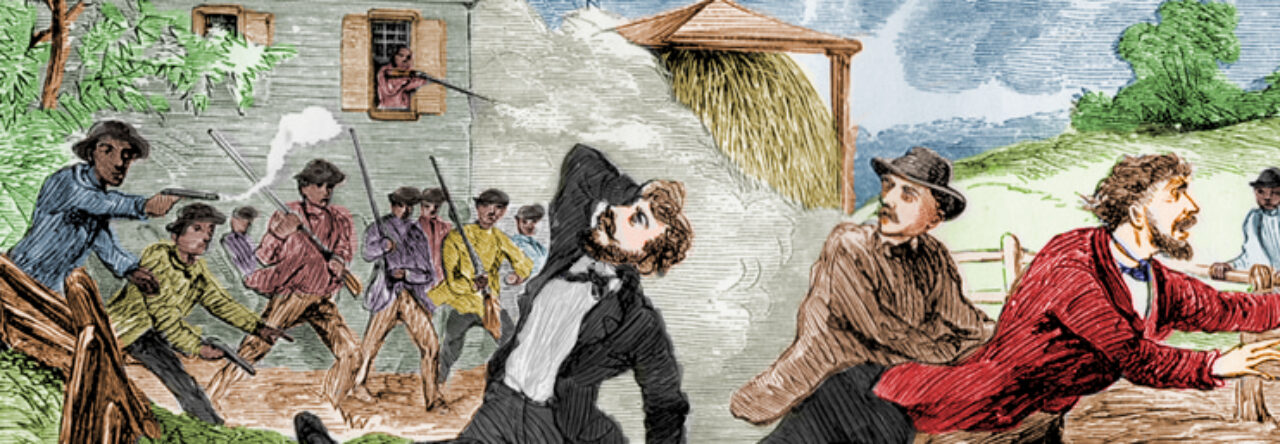Banner image: Colorized illustration from the original engraving about the 1851 Christiana resistance in William Still’s Underground Railroad (1872), featuring figures such as Eliza and William Parker (fighting from “riot” house) and slaveholder Edward Gorsuch (fatally wounded, center) (House Divided Project)
This page contains brief profiles for each of the historical figures mentioned in the scholarly essays from the Underground Railroad handbook, as well many of those featured on the timeline pages at this companion site. The index includes freedom seekers, noted abolitionists, vigilance operatives, but also slaveholders, politicians, judicial officials and many others. Yet it is by no means intended to represent some kind of comprehensive national listing for participants or opponents of the historical Underground Railroad. However, it does provide an especially useful introduction to the many types of people who risked their lives and careers to help destroy slavery.
Anderson Ruffin Abbott was an African American doctor from Canada.
ESSAYS: Barker
Warren Adams was a slave catcher whose attempt to recapture a family of freedom seekers in 1851 was thwarted when residents in northern Coahuila, Mexico, defended the freedom seekers with arms.
ESSAYS: Baumgartner
Richard Allen (1760-1831) was a freedom seeker who founded and served as the first bishop of the AME church in Philadelphia.
ESSAYS: LaRoche
Elijah Anderson was a free Black Underground railroad activist in Madison, Indiana.
John Anderson was a freedom seeker who escaped to Canada.
ESSAYS: Jackson
John Anderson (alias Phillip Nettles) was an enslaved man who escaped by boat to British Jamaica, where a local magistrate pronounced him free.
ESSAYS: Blackett
Osborne Perry Anderson was an African American involved in John Brown’s 1859 Harpers Ferry Raid.
ESSAYS: Barker
Henry Anthony was a freedom seeker who resettled in Florence, Massachusetts.
ESSAYS: Grover
Jean Antoine was an enslaved man who escaped by boat from New Orleans to Campeche, Mexico in 1835, where authorities returned him to Louisiana.
ESSAYS: Baumgartner
Lord Ashburton was a British official who negotiated the 1842 Treaty of Washington under instructions not to make any concessions for the rendition of freedom seekers who reached British soil.
ESSAYS: Barker
Atticus was a freedom seeker whose 1837 escape by boat sparked an extradition controversy between Georgia and Maine.
ESSAYS: Baker
John Atkinson was a freedom seeker interviewed by abolitionist Benjamin Drew in Canada during the 1850s.
ESSAYS: Cohen // Newby-Alexander
Alexander Thomas Augusta was an African American doctor and abolitionist in Canada.
ESSAYS: Barker
George F. Badger was a North Carolina slaveholder who served as US secretary of the Navy.
ESSAYS: Harrold
Frank Baker was one of three freedom seekers whose May 1861 escape to US lines at Fort Monroe triggered the US army’s contraband decision.
ESSAYS: Manning
Charles Ball was a freedom seeker whose 1837 slave narrative gained wide readership among antislavery Northerners.
Henry Banks was a freedom seeker who escaped from the Shenandoah Valley of Virginia in February 1853.
ESSAYS: Blackett
Henry Banks was a freedom seeker who escaped from Ayler’s slave pen in Richmond in 1854 and resettled in St. Catharines, Canada.
ESSAYS: Newby-Alexander
William Batchelder (-1854) was a U.S. deputy marshal killed while guarding a federal hearing room during the 1854 rendition hearing for freedom seeker Anthony Burns.
ESSAYS: Finkelman
Isaac Beck was a Underground Railroad activist in Ohio.
ESSAYS: Bordewich
Daniel Bell was an enslaved ironworker and Underground Railroad activist in Washington.
ESSAYS: Harrold
Henry Bibb was a freedom seeker who escaped from Kentucky, which he recounted in his Narrative (1849). Bibb resettled in Canada where he remained active in abolitionist circles.
ESSAYS: Blackett // Barker // Crew
Jacob Bigelow was a white attorney from Massachusetts who assisted freedom seekers to escape from Washington, DC.
ESSAYS: Harrold
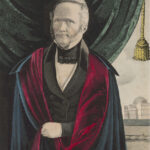
James Birney (Library of Congress)
James Birney (1792-1857) was an abolitionist and two-time presidential candidate of the Liberty Party.
ESSAYS: Sinha
Ben Blackburn was a freedom seeker, interviewed by abolitionist Benjamin Drew in Canada during the 1850s.
ESSAYS: Cohen
Lucie (also Ruthie) and Thornton Blackburn were two enslaved people in Kentucky who successfully escaped to Detroit and later Windsor, Canada. British authorities in Canada refused to extradite them back to the United States.
ESSAYS: Barker
John Blevens was an abolitionist convicted of slave stealing in Virginia.
ESSAYS: Sinha
Susan Borders was an enslaved woman living in Illinois, where slaveholder Andrew Borders held her and her three sons under indenture contracts. Borders and her children escaped in 1842 with assistance from Illinois’s Underground Railroad network, but later slave catchers recaptured them. Borders secured her freedom in court, but her children were returned to indentured servitude.
ESSAYS: Johnson
William Ingersoll Bowditch was an abolitionist who assisted freedom seekers from Boston.
ESSAYS: Grover
Lawrence Brainerd was a US senator from Vermont and investor in steamboats and railroads who lived in St. Albans, Vermont, where he helped freedom seekers escape by steamboat and railroad north.
ESSAYS: Grover
George Brown was the publisher of the Globe and Mail and a supporter of antislavery activism in Canada.
ESSAYS: Barker
James C. Brown was an African American activist in Ohio.
ESSAYS: Barker
Joseph E. Brown was the governor of Georgia who argued that slaveholders should support secession because the mounting number of escapes on the Underground Railroad rendered slave property insecure.
ESSAYS: Oakes
Frances and Thomas Brown were abolitionists in Pittsburgh, Pennsylvania.
ESSAYS: Sinha
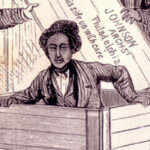
Henry “Box” Brown (House Divided Project)
Henry “Box” Brown (ca. 1815-1897) was a Virginia freedom seeker who arranged to have himself mailed from Richmond, Virginia to the office of the Philadelphia vigilance committee in 1849. Brown later toured as an antislavery lecturer and magician.
ESSAYS: Crew // Foner // Sinha
J.M. Brown was an Underground Railroad activist in New Orleans and an AME bishop.
ESSAYS: LaRoche
John Brown was an abolitionist best known for his controversial and ill-fated raid at Harpers Ferry in 1859.
ESSAYS: Barker // Jackson // Johnson // Sinha
John L. Brown was a Maine abolitionist convicted for helping a freedom seeker in Charleston, South Carolina.
ESSAYS: Sinha
William Wells Brown was a freedom seeker who escaped from Missouri in 1834 and became a celebrated author and speaker on the abolitionist lecture circuit.
ESSAYS: Blackett // Barker // Crew // Johnson
Henry Clay Bruce and Pauline Bruce were an enslaved couple in Missouri who escaped from slavery in 1864.
ESSAY: Johnson
Andrew Bryan founded of the one of the first African American churches in Savannah, Georgia.
ESSAYS: LaRoche
Sarah Buchanon was a free Black boarding house operator in Philadelphia who worked with vigilance leader William Still to shelter freedom seekers.
ESSAYS: Larson
Noah Buley was one of four freedom seekers who escaped from Maryland slaveholder Edward Gorsuch and resisted recapture during the Christiana resistance in 1851.
ESSAYS: Jackson // Oakes // Pinsker
Anthony Burns was a freedom seeker who escaped from Virginia to Massachusetts, only to be captured and returned to slavery by federal authorities following a controversial and expensive rendition hearing in June 1854.
ESSAYS:Blackett //Barker //Finkelman // Grover // Oakes // Pinsker // Sinha
Ambrose Burnside was a US general during the Civil War.
ESSAYS: Manning
James Burr was an abolitionist convicted of slave stealing in Missouri in 1841.
ESSAYS: Sinha
Samuel D. Burris (1813-1863) was a free Black man and Underground Railroad operative.
ESSAYS: Sinha
Andrew Butler was a proslavery US senator from South Carolina.
ESSAYS: Oakes
Benjamin Butler was a US general during the Civil War who developed the contraband decision.
ESSAYS: Manning
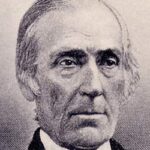
Levi Coffin (House Divided Project)
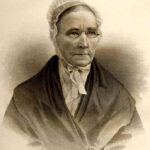
Catherine Coffin (House Divided Project)
Catherine (1803-1881) and Levi Coffin (1798-1877) were a Quaker couple renowned for their Underground Railroad activism. The couple relocated from North Carolina to Indiana in 1826, where they assisted more than 2,000 freedom seekers over two decades. In 1847, the Coffins moved to Cincinnati and continued their Underground Railroad work. During the Civil War, the couple turned their attention to aiding wartime freedom seekers in contraband camps. By the time Levi Coffin died in 1877, he had come to be known as the “President of the Underground Railroad” in recognition for his prolific aid to freedom seekers. Catherine, who had been crucial to those same efforts, died in 1881.
ESSAYS: Blackett // Barker // Bordewich // Churchill // Crew // Larson
Samuel Chadwick was a New Bedford, Massachusetts merchant who helped freedom seekers escape from Virginia by boat.
ESSAYS: Newby-Alexander
William Chaplin (1796-1871) was an abolitionist and Underground Railroad operative arrested and imprisoned for four months by Washington, DC authorities.
Charley was an enslaved man who provided military intelligence to US forces in North Carolina.
ESSAYS: Manning
Charley was an Underground Railroad activist in Chicago, Illinois.
ESSAYS: Barker
Elizabeth Buffum Chace lived in Valley Falls, Rhode Island, where she directed freedom seekers to the Providence and Worcester Railroad.
ESSAYS: Grover
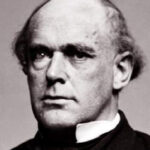
Salmon P. Chase (Library of Congress)
Salmon P. Chase (1808-1873) was an antislavery lawyer and politician, Ohio senator, governor, US secretary of the Treasury, and Chief Justice of the US Supreme Court.
William Cheney was a Louisiana slaveholder arrested in Mexico for attempting to recapture freedom seeker Mathilde Hennes in 1850.
ESSAYS: Baumgartner
Lydia Maria Child was an abolitionist and women’s rights advocate.
ESSAYS: Crew
Rufus Choate (1799-1859) was an antislavery lawyer from Massachusetts.
ESSAYS: Sinha
Alanson M. Clark was a cattle and sheep breeder who employed a freedom seeker near St. Albans, Vermont.
ESSAYS: Grover
James Freeman Clark was a Boston resident who lived next door to antislavery activists George and Susan Hilliard.
ESSAYS: Grover
Thomas Clarkson was a British abolitionist who spearheaded the campaign to end the Trans-Atlantic Slave Trade.
ESSAYS: Barker
Chloe Cooley was an enslaved woman living in Ontario, Canada. Her 1793 kidnapping by a US slaveholder galvanized support for Upper Canada’s gradual abolition law.
ESSAYS: Barker
John Colborne served as lieutenant governor of Upper Canada, where he welcomed African Americans fleeing slavery and discrimination in the United States.
ESSAYS: Barker
Seth Concklin was an abolitionist who attempted to help Peter Still escape from Alabama in 1851. Concklin and Still were recaptured in Indiana, and Concklin found dead later.
ESSAYS: Blackett
F. George Cope was a grocer and Underground Railroad activist in Louisville, Kentucky. Cope was never convicted, but spent years in prison on charges of assisting an enslaved woman named Rachel to escape to Canada.
ESSAYS: Blackett
John Anthony Copeland was a free African American abolitionist hanged for his role in John Brown’s 1859 Harpers Ferry raid.
ESSAYS: Barker
Samuel Cornish (1795-1858) was an African American minister and co-editor of Freedom’s Journal.
ESSAYS: LaRoche
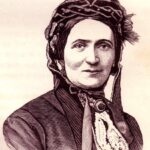
Ellen Craft (House Divided Project)
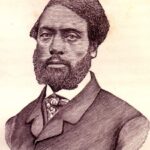
William Craft (House Divided Project)
Ellen (1826-1891) and William Craft (1824-1900) rose to international fame for their daring escape aboard a train from Georgia in 1848. Ellen, who was light-skinned, posed as a male slaveholder, and William acted as her enslaved valet. The Crafts settled for several years in Boston, where they publicly defied the 1850 Fugitive Slave Act, before ultimately relocating to England. There, the couple published their story, Running a Thousand Miles for Freedom (1860). After the Civil War, the Crafts returned to Reconstruction-era Georgia and opened schools for freedpeople.
ESSAYS: Blackett // Crew // Grover // Larson // Oakes // Sinha
Alfred Critchlow ran a daguerreotype case factory in Florence, Massachusetts and helped shelter freedom seeker Lewis French, one of his employees, from slave catchers.
ESSAYS: Grover
John Cross was an abolitionist minister.
ESSAYS: Johnson
Adam Crosswhite (1799-1878) was a freedom seeker at the center of a controversial fugitive slave rescue in 1847 that led many slaveholders to call for harsher federal fugitive slave legislation. Crosswhite, wife Sarah, and their four children John Anthony, Benjamin Franklin, Cyrus Jackson, and Lucretia, escaped from Kentucky in 1843 and settled at Marshall, Michigan. When slave catchers caught up with the Crosswhites there in January 1847, local residents defended the family and aided their escape.
George DeBaptiste was a free Black Underground activist in Madison, Indiana.
Octave Delahoussaye was a Louisiana slaveholder.
ESSAYS: Baumgartner
Martin Delany was an African American abolitionist.
ESSAYS: Barker
Manuel Luis del Fierro was a resident of Reynosa, Tamaulipas, Mexico, where he defended his maid, freedom seeker Mathilde Hennes, from Louisiana slave catchers.
ESSAYS: Baumgartner
Richard Dillingham (1823-1850) was a Quaker abolitionist convicted of slave stealing in Nashville, Tennessee in 1848.
Basil Dorsey (ca. 1808-1872) was a freedom seeker whose 1837 escape and slave catchers’ attempt to recapture him in Pennsylvania led to the founding of the Philadelphia Vigilance Committee. Dorsey latter settled in Northampton, Massachusetts
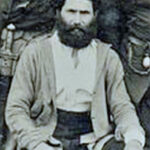
John Doy (House Divided Project)
Dr. John Doy (-1869) was an English-born abolitionist best known for his dramatic escape from a Missouri prison. In January 1859, Doy attempted to lead a group of Missouri freedom seekers from Kansas to Iowa, but slave catchers overtook the party and clapped Doy and his son in jail. In June 1859, Missouri authorities sentenced Doy to five years of hard labor for “seducing” slaves from the state, but a band of Lawrence abolitionists rescued Doy from prison in July. Still a fugitive, Doy published his Narrative (1860) recounting his confinement and rescue. Missouri governor Thomas Fletcher finally pardoned Doy after the state abolished slavery in 1865. Doy died in 1869 in Battle Creek, Michigan, of suspected suicide.
Edward J. “Patrick” Doyle was a Kentucky student convicted of leading a stampede of over 40 freedom seekers from Lexington, Kentucky.
ESSAYS: Sinha
Anna Murray Douglass (1813-1882) frequently assisted freedom seekers from her Rochester, New York home while her husband, Frederick Douglass, was on the abolitionist lecture circuit.
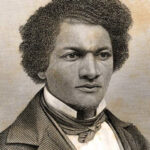
Frederick Douglass (House Divided Project)
Frederick Douglass (1818-1895) was perhaps the most famous freedom seeker in US history, escaping from slavery in Baltimore in 1838 to become an abolitionist orator, writer, and politician.
ESSAYS: Blackett // Barker // Crew // Finkelman // Jackson
Daniel Drayton was a seaman convicted for aiding 77 freedom seekers’ escape from Washington, DC in 1848 aboard the Pearl.
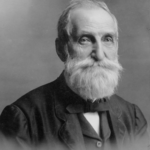
Benjamin Drew (Ohio History Connection)
Benjamin Drew (1812-1903) was an abolitionist who traveled to Canada and interviewed over 100 freedom seekers, whose stories he published in A North-Side View of Slavery.
Jordan Early was an AME minister.
ESSAYS: LaRoche
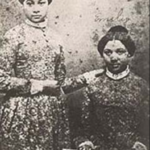
Mary and Emily Edmonson (House Divided Project)
Emily and Mary Edmonson were enslaved sisters who unsuccessfully attempted to flee Washington, DC aboard the Pearl in 1848. Abolitionists later helped raise funds to purchase the sisters’ freedom.
Harriet Eglin was a freedom seeker from Maryland whom William Still interviewed in Philadelphia.
ESSAYS: Foner
Rufus Elmore ran a wholesale shoe shop in Springfield, Massachusetts and employed freedom seeker James Lindsay Smith.
ESSAYS: Grover
Chester English was a seaman involved in the escape of 77 freedom seekers from Washington, DC in 1848 aboard the Pearl.
Olaudah Equiano was an enslaved man who later relocated to England, where he authored an influential narrative of his life to rally British public support against the Trans-Atlantic Slave Trade.
ESSAYS: Barker
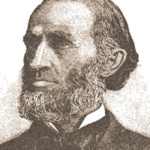
Abolitionist Calvin Fairbank (House Divided Project)
Calvin Fairbank (1816-1898) was a Methodist minister and Underground Railroad operative convicted in Kentucky for aiding the 1844 escape of Harriet and Lewis Hayden along with school teacher Delia Webster and then convicted again for a second offense in 1851. He ended up serving a total of seventeen years in Kentucky state prison before his release in 1864.
ESSAYS: Blackett // Baker // Larson // Pinsker // Sinha
Millard Fillmore served as the 13th president of the United States. Although a New Yorker, Fillmore supported the Compromise of 1850 and attempted to vigorously enforce the 1850 Fugitive Slave Act.
ESSAYS: Blackett // Grover // Harrold
Nelson Ford was one of four freedom seekers who escaped from Maryland slaveholder Edward Gorsuch and resisted recapture during the Christiana resistance in 1851.
ESSAYS: Jackson // Oakes // Pinsker
Albert Fountain was an Underground Railroad operative who sheltered freedom seekers aboard his ship, the Charles T. Ford.
ESSAYS: Foner
Stephen Foster was an abolitionist in Massachusetts.
ESSAYS: Barker
Lewis French was a freedom seeker who worked in a Florence, Massachusetts daguerreotype case factory.
ESSAYS: Grover
Albert Gallatin served as the US secretary of Treasury and US ambassador to Britain.
ESSAYS: Barker
Margaret Garner was a Kentucky freedom seeker who in January 1856 killed her young daughter when surrounded by slave catchers rather than allow her child to be returned to slavery.
ESSAYS: Churchill
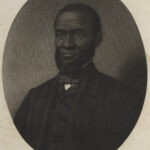
Henry Highland Garnet (National Portrait Gallery)
Henry Highland Garnet (1815-1882) was a freedom seeker and abolitionist, whose 1843 “Address to the Slaves” urged enslaved Southerners to resist the slave system.
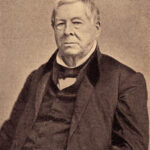
Thomas Garrett (House Divided Project)
Thomas Garrett (1789-1871) was a Quaker abolitionist and Underground Railroad operative who claimed to have assisted more than 2,000 freedom seekers over multiple decades. Working with Harriet Tubman and Philadelphia vigilance leader William Still, Garrett assisted freedom seekers from his Wilmington home northward to Philadelphia. In 1848, federal prosecutors convicted the abolitionist under the 1793 Fugitive Slave Act and fined him $5,400, but Garrett pledged to continue his Underground Railroad work. When Garrett died in 1871, Black residents of Wilmington came out in large numbers to pay their respects to the veteran abolitionist.
ESSAYS: Barker // Foner // Harrold // Larson / Sinha
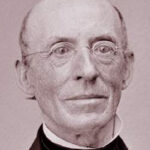
William Lloyd Garrison (House Divided Project)
William Lloyd Garrison (1805-1879) was an abolitionist and editor of the Liberator.
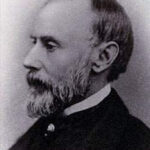
Sydney Howard Gay (House Divided Project)
Sydney Howard Gay (1814-1888) abolitionist, editor of the National Anti-Slavery Standard, leader of New York City’s vigilance operation
ESSAYS: Blackett // Foner // Larson // Pinsker // Sinha
William George was an enslaved man who escaped from Harpers Ferry, Virginia in 1851 and resettled in St. Catharines, Canada.
ESSAYS: Newby-Alexander
Jacob Gibbs was a free African American and Underground Railroad activist in Baltimore.
ESSAYS: Harrold
Abigail and James Gibbons were Quaker abolitionists who sheltered freedom seekers in their New York City home.
ESSAYS: Foner
Charlotte Giles was a freedom seeker from Baltimore who was interviewed by William Still in Philadelphia.
ESSAYS: Foner
Alexander Gilliland was an antislavery activist in Redoak, Ohio. In 1844, slave catchers beat Gilliland for his efforts to defend freedom seekers.
ESSAYS: Churchill
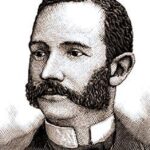
Joshua Glover (House Divided Project)
Joshua Glover was a Missouri freedom seeker at the center of a pivotal fugitive slave case. In 1854, Milwaukee, Wisconsin abolitionists rescued him from federal custody. Efforts to prosecute Glover’s rescuers led to a lengthy standoff between Wisconsin state authorities and the federal government over the constitutionality of the 1850 Fugitive Slave Act.
ESSAYS: Sinha
John Gloucester was the minister of the First African Presbyterian Church in Philadelphia.
ESSAYS: LaRoche
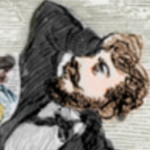
Edward Gorsuch (House Divided Project)
Edward Gorsuch (1795-1851) was a Maryland slaveholder killed while trying to recapture four freedom seekers at Christiana, Pennsylvania.
ESSAYS: Jackson // Oakes // Pinsker
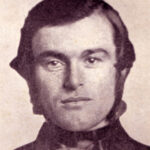
Dickinson Gorsuch (House Divided Project)
Dickinson Gorsuch (1827-1882) was the son of Maryland slaveholder Edward Gorsuch and wounded while trying to recapture four freedom seekers at Christiana, Pennsylvania.
Ulysses S. Grant was a US general during the Civil War who later served as the 18th president of the United States, overseeing a critical period of Reconstruction.
ESSAYS: Barker
Samuel Green was an African American minister in Maryland accused of assisting freedom seekers. Unable to prove his Underground railroad activities, Maryland authorities still managed to convict Green for owning a copy of Uncle Tom’s Cabin.
ESSAYS: Blackett
Willard Green was a slave catcher involved in an 1847 attempt to recapture freedom seekers near Marietta, Ohio.
ESSAYS: Churchill
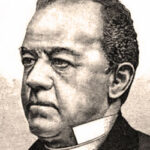
Rev. Leonard Grimes (House Divided Project)
Leonard Grimes was the pastor of Twelfth Baptist Church in Boston who assisted freedom seekers.
ESSAYS: Grover // LaRoche // Pinsker
William Grose was a freedom seeker interviewed by abolitionist Benjamin Drew in Canada during the 1850s.
ESSAYS: Cohen
John Hale was an antislavery US senator from New Hampshire and the Free Soil Party’s 1852 presidential candidate.
ESSAYS: Oakes
Stephen Hale was Alabama’s secession commissioner who unsuccessfully tried to persuade Kentucky to join the Confederacy.
ESSAYS: Oakes
George and Joshua Hammond were among four freedom seekers who escaped from Maryland slaveholder Edward Gorsuch and resisted recapture during the Christiana resistance in 1851.
ESSAYS: Jackson // Oakes // Pinsker
Jesse Happy was an enslaved man who escaped from Kentucky in 1837 and successfully reached Canada, where authorities refused to extradite him back to the United States.
ESSAYS: Barker
Dr. Ellwood Harvey was an abolitionist who assisted freedom seeker Anna Maria Weems to escape from Washington, DC.
ESSAYS: Larson

Laura Haviland (House Divided Project)
Laura Haviland (1808-1898) was a Michigan abolitionist and Underground Railroad operative.
ESSAYS: Barker // Crew // Larson // Sinha

Harriet Hayden (National Park Service)
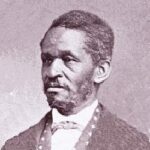
Lewis Hayden (National Park Service)
Harriet (1816-1893) and Lewis Hayden (1811-1889) fled slavery and became key leaders in Boston’s antislavery vigilance network. In 1844, the Haydens (Lewis, Harriet, and Harriet’s son from a previous marriage) escaped from Kentucky with Harriet’s five year old son Joe thanks to help from white abolitionists Calvin Fairbank and Delia Webster, who faced lengthy jail time for their role in helping the Haydens. Harriet and Lewis went to Detroit and Canada, before eventually relocating to Boston. There, the Haydens became active members of Boston’s antislavery vigilance committee, sheltering freedom seekers (most famously William and Ellen Craft) and openly defying the 1850 Fugitive Slave Act. The Haydens remained active in the Underground Railroad and Republican politics through the Civil War. In 1873, Lewis Hayden won election to a single term in the Massachusetts state legislature.
ESSAYS: Barker // Blackett //Crew // Cohen // Grover // Larson // LaRoche // Sinha
Thomas Hedgebeth was a freedom seeker interviewed by abolitionist Benjamin Drew in Canada during the 1850s.
ESSAYS: Cohen
Alexander Hemsley (c. 1800 – ) was a freedom seeker, reverend, interviewed by abolitionist Benjamin Drew in Canada during the 1850s.
Francis Henderson was a freedom seeker, interviewed by abolitionist Benjamin Drew in Canada during the 1850s.
ESSAYS: Cohen
George Henderson was a slaveholder in Williamstown, Virginia, who struggled to recapture a dozen freedom seekers who escaped into Ohio.
ESSAYS: Churchill
Mathilde Hennes was a freedom seeker who successfully resisted slave catchers in Reynosas, Tamaulipas, Mexico in 1850.
ESSAYS: Baumgartner
Jerry Henry was a freedom seeker at the center of a controversial fugitive slave rescue in 1851.
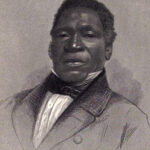
Josiah Henson (Library of Congress)
Josiah Henson (1789-1883) was a freedom seeker, preacher, and a leading voice of the antislavery movement. Born into slavery in Maryland, Henson escaped to Canada during the 1830s, served in Britain’s Black militia, and published his autobiography, The Life of Josiah Henson (1849). Henson’s life story may have partially inspired the character of Uncle Tom in Harriet Beecher Stowe’s best-selling antislavery novel, Uncle Tom’s Cabin (1852). Henson died in Ontario, Canada in 1883.
ESSAYS: Barker // Crew // LaRoche
Elizabeth Heyrick was an English Quaker abolitionist.
ESSAYS: Barker
Edward Hicks was a freedom seeker interviewed by abolitionist Benjamin Drew in Canada during the 1850s.
ESSAYS: Cohen
Simon Hill was a freedom seeker from Appomattox County, Virginia, interviewed by Sydney Howard Gay in New York.
ESSAYS: Foner
George and Susan Hilliard lived in Boston, where George served as a U.S. commissioner. Rather than enforce the 1850 Fugitive Slave Act, George and Susan sheltered freedom seekers and in October 1850 tipped off freedom seekers Ellen and William Craft about efforts to recapture them.
ESSAYS: Grover
Erastus Hopkins was the president of the Connecticut River Railroad and used his position to assist freedom seekers.
ESSAYS: Grover
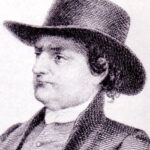
Isaac Hopper (House Divided Project)
Isaac T. Hopper (1771-1852) was a Quaker abolitionist who first assisted freedom seekers in Philadelphia during the 1790s. Hopper later relocated to New York City in 1829, where he continued his antislavery activism.
Joseph Hornblower (1777-1864) was the chief justice of New Jersey who defended the state’s personal liberty law while calling into question the federal 1793 Fugitive Slave Act.
Weston Howland was a Quaker merchant in New Bedford, Massachusetts who assisted freedom seekers to escape by boat from Virginia.
ESSAYS: Newby-Alexander
John Hudson was a free African American and Underground Railroad operative who lived near Ripley, Ohio.
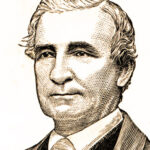
John Hunn (House Divided Project)
John Hunn (1818-1894) was a Quaker abolitionist in Delaware who often worked in tandem with Thomas Garrett. In 1848, federal prosecutors convicted Hunn of violating the 1793 Fugitive Slave Act and fined him $2,500 in damages.
ESSAYS: Sinha
Seth Hunt was the clerk of the Connecticut River Railroad and used his position to aid freedom seekers.
ESSAYS: Grover
Washington Hunt served as governor of New York.
ESSAYS: Barker
Erastus Hussey was an Underground Railroad activist in Battle Creek, Michigan.
ESSAYS: Johnson
Isaac was a freedom seeker at the center of an extradition controversy between New York and Virginia authorities in 1839.
ESSAYS: Baker
Isaac was a freedom seeker who escaped from Virginia in 1837, but later returned to assist his wife and daughter to freedom in 1846.
ESSAYS: Churchill
Matilda and Nathaniel Jackson were a married couple living near Hidalgo, Texas who assisted freedom seekers on their way to Mexico.
ESSAYS: Baumgartner
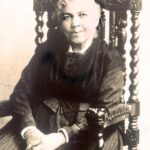
Harriet Jacobs (House Divided Project)
Harriet Jacobs (1813-1897) was a freedom seeker best known today for her gripping memoir recounting the cruel treatment and sexual abuse she suffered under slavery. Born into slavery in coastal Edenton, North Carolina, a teenaged Jacobs resisted her slaveholders’ sexual advances by beginning a relationship with another white man, Samuel Sawyer. Sawyer and Jacobs had two children, Joseph and Louisa, whom Sawyer purchased but did not liberate, instead sending Louisa north to work as a domestic servant. After hiding for more than seven years in her grandmother’s home, Jacobs escaped northward by boat in 1842 in hopes of reuniting with her children. Jacobs moved throughout New England until New Bedford, Massachusetts abolitionist Cornelia Grinnell Willis purchased Jacobs’s freedom in 1852. Jacobs went on to write her memoir, Incidents in the Life of a Slave Girl (1860), making her one of the first women to author a slave narrative in the United States. During the Civil War, Jacobs spearheaded efforts to provide humanitarian aid and education to freedpeople in Washington, DC and Georgia, before ultimately settling in Washington, where she died in 1897.
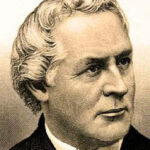
John Jay II (House Divided Project)
John Jay II (1817-1894) was an antislavery attorney in New York City.
ESSAYS: Foner
Jameson Jenkins was a free African American and Underground Railroad activist in Springfield, Illinois.
ESSAYS: Johnson
Joe was an enslaved man who escaped from Octave Delahoussaye’s sugar plantation in Louisiana in 1822, but slave catchers recaptured him before he could reach Mexico.
ESSAYS: Baumgartner
John and his father Peter were enslaved people living in the Mexican province of Téjas who escaped to San Antonio de Béxar and secured their freedom in 1832.
ESSAYS: Baumgartner
Charles Johnson was a freedom seeker captured in Florida with abolitionist Jonathan Walker.
ESSAYS: Sinha
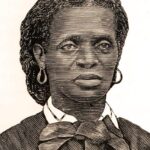
Jane Johnson (House Divided Project)
Jane Johnson (-1872) was a freedom seeker at the center of a controversial 1855 rescue case when slaveholder John Wheeler attempted to travel through Philadelphia with Johnson and her two sons, Daniel and Isaiah. Philadelphia vigilance leaders William Still and Passmore Williamson assisted the Johnsons and later faced charges for their involvement.
Gilman Jones was a thread and spool manufacturer in Ashburnham, Massachusetts who sheltered and employed freedom seeker Josiah Thomas, his wife, and their child.
ESSAYS: Grover
John and Mary Jones were abolitionists in Chicago. In 1865, John won election as a commissioner for Cook County, Illinois.
ESSAYS: Sinha
Jane Kane was an enslaved woman who escaped with the help of her fiancée, Ben Ross, Jr., the brother of Harriet Tubman.
ESSAYS: Larson
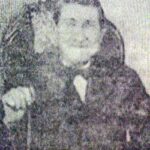
Daniel Kaufman (House Divided Project)
Daniel Kaufman (1818-1902) was the last abolitionist to be convicted under the 1793 Fugitive Slave Act for harboring freedom seekers. In 1847, Kaufman sheltered a group of 13 freedom seekers at his farm in Boiling Springs, Pennsylvania. The freedom seekers escaped, but slaveholders sought damages from Kaufman and won in the third trial in 1852.
Abby Kelley was an abolitionist in Massachusetts.
ESSAYS: Barker
Absalom King was a free African American activist in Redoak, Ohio. Slave catchers and vigilance forces battled at his home in 1844, and slaveholder Edward Towers’s son was shot and killed while attempting to recapture freedom seekers taking refuge with King.
ESSAYS: Churchill
William King was a reverend and founder of the Elgin Association.
ESSAYS: Barker
Chauncey L. Knapp served as Vermont’s secretary of state and actively assisted freedom seekers.
ESSAYS: Grover
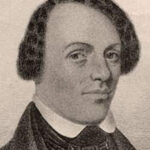
George Latimer (NYPL)
George Latimer (1819-1897) was a freedom seeker whose escape and subsequent arrest prompted the passage of a groundbreaking new personal liberty law in Massachusetts. In 1842, Latimer and his pregnant wife, Rebecca, escaped from Norfolk, Virginia by boat. The couple reached Boston, where slave catchers quickly caught up with him. Antislavery activists purchased Latimer’s freedom, but popular outrage over his arrest led Massachusetts lawmakers to adopt a new personal liberty law in March 1843 barring state officials from cooperating with slaveholders, popularly known as the Latimer Law. Other Northern states followed suit, passing similar non-cooperation laws.
ESSAYS: Baker // Grover // Sinha
Willis Lago was a free Black man at the center of an extradition controversy between Ohio and Kentucky state authorities. Ohio governor Salmon P. Chase refused to extradite Lago to Kentucky for aiding runaway slaves in a case eventually decided by the US Supreme Court in Kentucky v. Dennison (1861).
ESSAYS: Baker
Amos Lawrence was a Cotton Whig in Massachusetts who turned against the 1850 Fugitive Slave Act after the controversial 1854 rendition of Anthony Burns from Boston.
ESSAYS: Blackett
Matilda Lawrence was a freedom seeker remanded to slavery from Ohio in 1837. Antislavery attorney Salmon P. Chase represented Lawrence and lost her case, but his argument advanced an antislavery reading of the US Constitution which became influential in antislavery circles.
ESSAYS: Sinha
John W. Lewis was an African American minister.
ESSAYS: Grover
George Liele formed First African Baptist Church in Savannah, Georgia.
ESSAYS: LaRoche
Abraham Lincoln served as the 16th president of the United States.
ESSAYS: Barker // Harrold // Oakes
Eliza and John Little were freedom seekers interviewed by abolitionist Benjamin Drew in Canada during the 1850s.
ESSAYS: Cohen
Dan Josiah Lockhart was a freedom seeker who escaped from Frederick County, Virginia in 1847 and resettled in St. Catharines, Ontario, Canada.
ESSAYS: Newby-Alexander
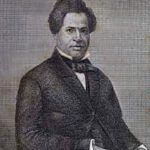
Jermain Loguen (House Divided Project)
Jermain Loguen (1813-1872) escaped from slavery in Tennessee, becoming a prolific Underground Railroad activist and a leading voice in the abolitionist movement. The son of his white slaveholder, Loguen escaped from Tennessee in 1834, settling in Canada West for several years and changing his name from “Jarm Logue.” By the 1840s, Loguen relocated to Syracuse, New York, where his very public assistance to freedom seekers earned him the title of the “Underground Railroad King.”
ESSAYS: Barker // Blackett // Bordewich // Crew // Foner // Jackson // LaRoche // Sinha
Ellis Gray Loring (1803-1858) was an antislavery lawyer in Massachusetts.
ESSAYS: Sinha
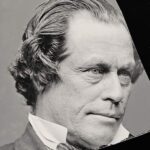
Owen Lovejoy (House Divided Project)
Owen Lovejoy (1811-1864) was an antislavery congressman from Illinois who sheltered freedom seekers in his home.
Charles Peyton Lucas was a freedom seeker interviewed by abolitionist Benjamin Drew in Canada during the 1850s.
ESSAYS: Cohen
Beriah Magoffin was the governor of Kentucky.
ESSAYS: Oakes
Charles Mallory was a Confederate colonel and slaveholder who unsuccessfully attempted to reclaim Frank Baker, Shepard Mallory, and James Townsend from US forces in May 1861.
ESSAYS: Manning
Shepard Mallory was one of three freedom seekers whose May 1861 escape to US lines at Fort Monroe triggered the US army’s contraband decision.
ESSAYS: Manning
Lord Mansfield was an English judge who decided the 1772 Somerset case, in which he ruled that slavery was “so odious” and contrary to natural law that it could only exist where positive laws protected it.
ESSAYS: Barker
Peter Martin was a free African American man living in Niagara, Canada, who witnessed the kidnapping of an enslaved woman named Chloe Cooley.
ESSAYS: Barker
Samuel May was an abolitionist.
ESSAYS: Barker
Joseph Mayo was a free African American Underground Railroad activist in Marysville, Ohio.
ESSAYS: Bordewich
Martha and William McIntyre were antislavery activists in Adams County, Ohio who defended freedom seekers from slave catchers in 1844.
ESSAYS: Churchill

James Miller McKim (House Divided Project)
James Miller McKim (1810-1874) was an abolitionist, graduate of the Dickinson College class of 1828, who edited the antislavery Pennsylvania Freeman and assumed a leadership role in the Philadelphia Vigilance Committee.
John Berry (1789-1854) and Mary Meachum (1801-1869) were free African Americans and Underground Railroad activists in St. Louis. John Berry was an African American minister in the city, while Mary continued to aid freedom seekers and promote African American education after her husband’s death.
William Hamilton Merritt was a legislator in the Assembly of Upper Canada.
ESSAYS: Barker
Robert Miller was a free African American activist in Redoak, Ohio. Slave catchers stabbed him to death in 1844 when he resisted their efforts to search his home for freedom seekers.
ESSAYS: Churchill
Myrtilla Miner was a Northern schoolteacher who established a school for African American girls in Washington, DC and assisted several African American children to escape.
ESSAYS: Harrold
John Minkins was a free African American ship steward who assisted freedom seekers to escape from Norfolk, Virginia.
ESSAYS: Newby-Alexander
Shadrach Minkins was a freedom seeker at the center of a controversial fugitive slave rescue in 1851. Minkins escaped from Norfolk, Virginia to Boston, where abolitionists rescued him from a federal rendition hearing in February 1851.
William M. Mitchell was an African American minister in Toronto.
ESSAYS: Barker
Ralph Montgomery was an enslaved man working in Iowa whose seizure prompted the Iowa Territorial Supreme Court to rule that “no man in this territory can be reduced to slavery.”
ESSAYS: Johnson
Margaret Morgan was a Maryland freedom seeker seized by Maryland slave catcher Edward Prigg in 1837. Prigg’s conviction under Pennsylvania’s 1826 personal liberty law for kidnapping Morgan led to the US Supreme Court’s decision in Prigg. v. Pennsylvania (1842), which not only overturned Prigg’s conviction but also ruled that Northern states’ many personal liberty laws (like Pennsylvania’s) were unconstitutional.
Hannah Morrison was an enslaved women held along with her mother as indentured servants in Illinois by Andrew Borders. Hannah escaped in 1842, was recaptured, but secured her freedom in court.
ESSAYS: Johnson
Solomon Moseby was an enslaved man who escaped from Kentucky to Canada in 1837. After a sheriff arrested Moseby, more than 200 African Americans from Niagara, Canada rescued him.
ESSAYS: Barker
Lucretia Mott (1793-1880) was a Quaker abolitionist and suffragist in Philadelphia.
ESSAYS: Larson
Harriet and Stephen Myers were Black abolitionists who sheltered freedom seekers in their Albany, New York home.
ESSAYS: Sinha
Charles Nalle was a Virginia freedom seeker rescued from federal custody in Troy, New York in April 1860.
ESSAYS: Sinha
Louis Napoleon (1800-1881) was a free Black Underground Railroad operative in New York City. Working with Sydney Howard Gay, Napoleon escorted freedom seekers arriving in the city to the vigilance committee’s offices.
Charles Nelson was a freedom seeker. Vermont’s secretary of state Chauncey L. Knapp and Underground Railroad activist Rowland T. Robinson assisted Nelson to freedom.
ESSAYS: Grover
Christopher Nicholson was a freedom seeker who escaped from Fredericksburg, Virginia and resettled in St. Catharines, Canada.
ESSAYS: Newby-Alexander
Mrs. Padgett operated a Washington, DC boardinghouse and worked with Charles Torrey, and Thomas and Elizabeth Smallwood to assist freedom seekers during the early 1840s.
ESSAYS: Harrold
Thomas Page was a freedom seeker from Norfolk, Virginia, interviewed by William Still in Philadelphia.
ESSAYS: Foner
John Parker (1827-1900) was a freedom seeker and Underground Railroad operative in Ripley, Ohio.
John Parker was a Quaker merchant in New Bedford, Massachusetts who assisted freedom seekers to escape by water from Norfolk, Virginia.
ESSAYS: Newby-Alexander
Eliza and William Parker (1821-1891) were freedom seekers who organized vigilance forces against a federal posse in the Christiana resistance.
ESSAYS: Finkelman // Jackson // Pinsker // Sinha
Theodore Parker was an abolitionist minister
Winnie Patsy was a freedom seeker who escaped from Norfolk, Virginia with her three-year-old daughter Elizabeth.
ESSAYS: Larson
Patty was an enslaved woman rescued from Loudon County, Virginia by Leonard Grimes in 1839.
ESSAYS: LaRoche
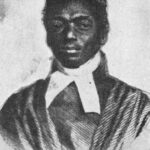
James W.C. Pennington (NYPL)
James W.C. Pennington (1807-1870) was a freedom seeker and African American minister also known as James Pembroke.
ESSAYS: Blackett // Crew // LaRoche
Lewis Pettijohn was an antislavery activist in Sardinia, Ohio.
ESSAYS: Churchill
José de las Piedras was a Mexican army officer who returned three freedom seekers to Louisiana in 1832.
ESSAYS: Baumgartner
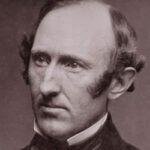
Wendell Phillips (House Divided Project)
Wendell Phillips (1811-1884) was a leading abolitionist from Massachusetts
ESSAYS: Miller
William P. Powell was a Black abolitionist who operated the Colored Seamen’s Boarding House in New York City.
ESSAYS: Foner
Thomas Pratt was a US senator from Maryland who supported the 1850 Fugitive Slave Act.
ESSAYS: Oakes
John Price was a Kentucky freedom seeker famously rescued from federal custody by a group that included faculty and students from Oberlin College in September 1858.
ESSAYS: Sinha
Edward Prigg (1791-1853) was a Maryland slave catcher convicted under Pennsylvania’s 1826 personal liberty law. Prigg appealed the decision to the US Supreme Court, which overturned his conviction and struck down many Northern states’ personal liberty laws in Prigg. v. Pennsylvania (1842).
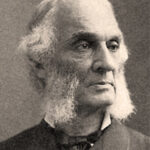
Robert Purvis (House Divided Project)
Robert Purvis (1810-1898) was a Black abolitionist and one of the leaders of the Philadelphia Vigilance Committee.
David Putnam Jr. was an Underground Railroad activist near Marietta, Ohio.
ESSAYS: Churchill
Caroline Quarlls was a freedom seeker from St. Louis who escaped by boat in 1843.
ESSAYS: Johnson
Rachel was an enslaved woman living in Louisville, Kentucky who escaped in 1856 with the assistance of Louisville grocer F. George Cope.
ESSAYS: Blackett
Edinbur Randall escaped from Jacksonville, Florida by boat in 1854 and escaped to Martha’s Vineyard, where African Americans and Indigenous people sheltered him. Randall reportedly worked at New Bedford under the alias Edgar Jones.
ESSAYS: Grover
John Rankin (1793-1886) was an abolitionist, Presbyterian minister, and Underground Railroad activist.
ESSAYS: Barker // Churchill // Sinha
John H. Rapier was an African American doctor in Canada.
ESSAYS: Barker
Charles Bennett Ray was an African American minister and editor of the Colored American.
ESSAYS: LaRoche
Enoch Reed (ca. 1813-1853) was an African American activist who helped rescue Jerry Henry from federal custody in Syracuse, New York on October 1, 1851. Federal authorities convicted Reed for violating the 1850 Fugitive Slave Act, but Reed died while awaiting his appeal.
ESSAYS: Finkelman
Jerome Riley was an African American doctor in Canada.
ESSAYS: Barker
Charles Rivers was a US slaveholder who emigrated to the Mexican province of Téjas with several enslaved people, four of whom successfully sued him for their freedom in 1831, on the grounds that Rivers had imported them illegally.
ESSAYS: Baumgartner
John Beverley Robinson served as the chief justice of Upper Canada. In 1819, Robinson refused to extradite freedom seekers back to the United States, citing the 1772 Somerset decision.
ESSAYS: Barker
Rowland T. Robinson was a Vermont Underground Railroad activist.
ESSAYS: Grover
Moses Roper escaped from North Carolina by boat to New York and eventually relocated to England, before finally returning to the United States during the Civil War.
ESSAYS: Grover
Alexander Ross was a botanist in Belleville, Canada who assisted freedom seekers from the US.
ESSAYS: Barker
Ben Ross, Jr. was an enslaved man and the brother of Harriet Tubman. He helped his fiancée, Jane Kane, escape in a suit of men’s clothing.
ESSAYS: Larson
Moses Ross was an enslaved man and the brother of Harriet Tubman, who escaped with his older sister’s help in 1851.
ESSAYS: Larson
Rachel Ross (-1859) was an enslaved woman who lived in Dorchester County, Maryland, with her two children, Ben and Angerine. She was the sister of Harriet Tubman, who repeatedly tried to help her escape, but Rachel refused to leave her children behind. She died, still enslaved, in 1859.
ESSAYS: Larson
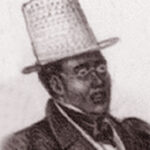
David Ruggles (House Divided Project)
David Ruggles (1810-1849) was a Black abolitionist who founded the New York Committee of Vigilance in 1835, which organized aid to freedom seekers passing through New York City. In 1838, Ruggles assisted Frederick Douglass during his escape and advised Douglass to journey to New Bedford.
ESSAYS: Barker //Crew // Foner // Grover // Sinha
Antonio López de Santa Anna was the president of Mexico whose centralizing policies threatened slavery and propelled proslavery Anglo-American settlers in Texas to declare independence in 1836.
ESSAYS: Baumgartner
Edward Sayres was a seaman convicted for aiding the escape of 77 freedom seekers from Washington, DC aboard the Pearl in 1848.
Samuel Sewall (1799-1888) was a Boston abolitionist.
ESSAYS: Sinha

William Seward (House Divided Project)
William Henry Seward (1801-1872) was an antislavery politician who served as New York governor, a US senator from New York, and US secretary of state from 1861-1869.
ESSAYS: Baker // Oakes // Sinha
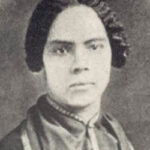
Mary Ann Shadd House Divided Project)
Mary Ann Shadd (later Cary) was an African American abolitionist based in Canada and editor of The Provincial Freeman.
ESSAYS: Barker
Granville Sharp was a British abolitionist.
ESSAYS: Barker
Lemuel Shaw (1781-1861) was a Massachusetts Supreme Court chief justice who denied slaveholders the right of transit through the state.
ESSAYS: Sinha
John Graves Simcoe served as the lieutenant governor of Upper Canada and spearheaded the push to adopt gradual abolition in the province in 1793.
ESSAYS: Barker
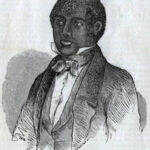
Thomas Sims (House Divided Project)
Thomas Sims was a freedom seeker famously returned to slavery from Boston under the 1850 Fugitive Slave Act. Sims stowed abroad a ship from Savannah, Georgia to Boston, where federal authorities captured him in April 1851. Later during the Civil War, Sims escaped with his family to US lines and toured as an abolitionist lecturer.
Elizabeth and Thomas Smallwood were Underground Railroad operatives in the Washington, DC area.
ESSAYS: Harrold
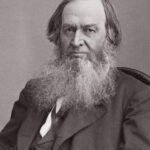
Gerrit Smith (Library of Congress)
Gerrit Smith (1797-1874) was an abolitionist who ran three times as the Liberty Party’s presidential nominee and served a single term as a New York congressman.
ESSAYS: Sinha
James Lindsay Smith was a freedom seeker who escaped from Virginia in 1838 and resettled in Springfield, Massachusetts.
ESSAYS: Grover
James McCune Smith (1813-1865) was a Black physician and abolitionist from New York.
ESSAYS: Foner
James Somerset was an enslaved man who successfully won his freedom when his slaveholder took him to England in the Somerset decision.
ESSAYS: Barker
Lucy Stanton was a Black educator and abolitionist.
ESSAYS: Jackson
Stephen was an enslaved man who escaped from Virginia slaveholder George Henderson in 1847.
ESSAYS: Churchill
Alexander Stephens (1812-1883) was a slaveholder who served as a congressman and US Senator from Georgia, and later as vice president of the Confederacy.
ESSAYS: Sinha
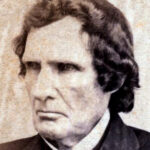
Thaddeus Stevens (House Divided Project)
Thaddeus Stevens (1792-1868) was an antislavery congressman from Lancaster, Pennsylvania.
Alvan Stewart (1790-1849) was an antislavery lawyer in New York and New Jersey.
ESSAYS: Sinha
Levin Still, Sr. was an enslaved man who purchased his freedom and moved to New Jersey, where he raised fourteen more children with his wife Sydney (Charity), who escaped from slavery to join him. He was the father of abolitionist William Still.
ESSAYS: Larson
Levin Still, Jr. was an enslaved man and the older brother of Philadelphia vigilance leader William Still. After Still’s mother Sydney (later Charity) escaped, Still’s slaveholder sold him and his brother to Kentucky, and eventually Alabama, where he died.
ESSAYS: Larson

Peter Still (House Divided Project)
Peter Still (1801-1868) was the older brother of Philadelphia vigilance leader William Still. Still was born into slavery but sold him south after his mother escaped to New Jersey. Peter eventually bought his freedom and came into contact with Philadelphia’s antislavery vigilance network in 1850, where he encountered with his long-lost brother William. Peter toured as an abolitionist lecturer to raise funds to purchase the rest of his family, still enslaved.
Sydney (later Charity) Still escaped from slavery in Maryland and resettled in New Jersey with her husband Levin. Sydney brought her two daughters with her, but her slaveholder sold her two sons, Peter and Levin, Jr., to Kentucky. In New Jersey, she gave birth to fourteen children, including abolitionist William Still in 1821.
ESSAYS: Larson
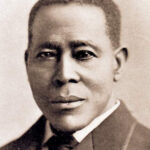
William Still (House Divided Project)
William Still (1821-1902) was a central figure in the Underground Railroad, both as an antebellum vigilance leader based in Philadelphia and as a historian of the network following the Civil War. Still was born free in New Jersey to parents who had been enslaved in Maryland. He came to Philadelphia in the 1840s, securing clerical work with the Pennsylvania Anti-Slavery Society. During the 1850s, Still served as operational leader of the Philadelphia Vigilance Committee, keeping detailed records which later became the basis for his groundbreaking memoir, The Underground Railroad (1872). When he died in 1902, the New York Times labeled him, “Father of the Underground Railroad.”
ESSAYS: Barker // Bordewich // Crew // Foner // Harrold // Larson // Newby-Alexander // Pinsker
Joseph Story (1779-1845) was a US Supreme Court justice who argued in an influential opinion in Prigg v. Pennsylvania (1842) that the federal government, rather than Northern states, was responsible for enforcing the 1793 Fugitive Slave Act.
ESSAYS: Finkelman
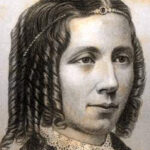
Harriet Beecher Stowe (House Divided Project)
Harriet Beecher Stowe (1811-1896) was a novelist and author of the best-selling antislavery novel, Uncle Tom’s Cabin (1852).
Charles Sumner was a US senator from Massachusetts and antislavery politician.
ESSAYS: Harrold
Louis Talbert was an enslaved man who escaped from Kentucky in 1845.
ESSAYS: Blackett
Roger B. Taney (1777-1864) was the chief justice of the US Supreme Court and author of the Dred Scott ruling in 1857, which argued that African Americans could not be US citizens and that slavery was a nationally protected institution.
Lewis Tappan (1788-1873) was an antislavery leader and philanthropist from New York.
ESSAYS: Foner
John Thomas was an Underground Railroad activist who assisted freedom seekers from his home near Azalia, Indiana.
ESSAYS: Churchill
Josiah Thomas escaped slavery with his wife and their child and reached Boston, before settling in Ashburnham, Massachusetts.
ESSAYS: Grover
George Thompson was an abolitionist convicted of slave stealing in Missouri in 1841.
ESSAYS: Sinha
James L. Thompson was an Underground Railroad activist in Canton, Indiana.
ESSAYS: Churchill
John W. Thompson was a freedom seeker who escaped from Maryland in 1842 and found work in New Bedford, Massachusetts aboard a whaling vessel.
ESSAYS: Grover
Brown Thurston was a Portland, Maine printer who assisted freedom seekers to Canada by coasting vessels and along the Grand Trunk Railroad.
ESSAYS: Grover
Harriet Tillison was a free Black woman in Kent County, Maryland accused of assisting freedom seekers.
ESSAYS: Larson
John Todd was an Underground Railroad activist in southern Indiana.
ESSAYS: Bordewich
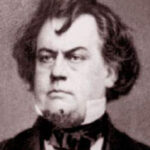
Robert Toombs (House Divided Project)
Robert Toombs (1810-1885) was a slaveholder who served as a US Senator from Georgia and later as secretary of state for the Confederacy.
ESSAYS: Sinha
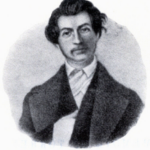
Charles Torrey (House Divided Project)
Charles Torrey (1813-1846) was an abolitionist, convicted of slave stealing under Maryland law in 1844, where he died in prison two years later.
ESSAYS: Baker // Harrold // Sinha
Edward Towers was a slaveholder. When freedom seekers escaped from his farm, Towers hired slave catchers who created mayhem in the town of Redoak, Ohio as they searched for the freedom seekers. Tower’s son was shot and killed in the clash.
ESSAYS: Churchill
James Townsend was one of three freedom seekers whose May 1861 escape to US lines at Fort Monroe triggered the US army’s contraband decision.
ESSAYS: Manning
Justo Treviño was a Mexican judge who investigated a pair of Louisiana slave catchers who attempted to recapture freedom seeker Mathilde Hennes in 1850.
ESSAYS: Baumgartner
William Troy was an African American minister in Windsor, Canada.
ESSAYS: Barker
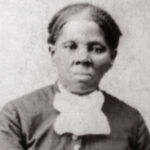
Harriet Tubman (House Divided Project)
Harriet Tubman (1820-1913) was a pivotal figure in the Underground Railroad, beginning with her own escape from slavery on the Eastern Shore of Maryland in 1849. Tubman returned multiple times to lead others to freedom, while becoming active in antislavery circles and collaborating with vigilance leaders like William Still in Philadelphia to assist freedom seekers. During the Civil War, Tubman served as a guide for US forces in South Carolina. Her legendary reputation as “Moses” grew even as Tubman lived much of the rest of her life in poverty.
ESSAYS: Barker // Blackett // Bordewich // Cohen // Crew // Foner // Larson // Newby-Alexander // Pinsker
John Van Zandt (1791-1847) was an Ohio abolitionist whose refusal to pay damages for assisting freedom seekers led to his conviction under the 1793 Fugitive Slave Act and prompted the US Supreme Court’s decision in Jones v. Van Zandt (1847), which affirmed the constitutionality of the 1793 law.
ESSAYS: Finkelman
Beulah Vanderhoop was a Gay Head Indigenous person who assisted freedom seeker Edinbur Randall, who escaped from a vessel that landed at Martha’s Vineyard in 1854.
ESSAYS: Grover
David Walker was an African American Abolitionist.
ESSAYS: Barker
Jonathan Walker (1799-1878) was a Massachusetts abolitionist convicted and branded for slave stealing in the Florida Territory in 1844.
ESSAYS: Sinha
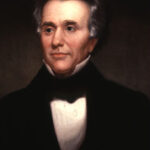
Reuben Walworth (Historical Society of the New York Courts)
Reuben H. Walworth (1788-1867) was chancellor of New York and declared the 1793 Fugitive Slave Act unconstitutional in Jack v. Martin (1835).
Samuel Ringgold Ward was a freedom seeker, African American minister, and abolitionist writer and lecturer.
ESSAYS: Barker // Crew // LaRoche
Madison Washington was a leader of the Creole revolt.
ESSAYS: Barker
John Ferdinand and Sylvia Webber were a married couple living near Hidalgo, Texas who assisted freedom seekers on their way to Mexico. Sylvia had been formerly enslaved herself, though her husband John Ferdinand was white.
ESSAYS: Baumgartner
Daniel Webster was a US senator from Massachusetts and US secretary of state, who famously supported the Compromise of 1850.
Delia E. Webster (1817-1904) was an abolitionist convicted in Kentucky for aiding the escape of Harriet and Lewis Hayden in 1844.
ESSAYS: Baker // Larson // Sinha
Anna Maria Weems was an enslaved woman who escaped from Washington, DC with help from abolitionist Dr. Ellwood Harvey from Washington, DC by disguising herself as a chauffeur.
Theodore Dwight Weld was an abolitionist.
ESSAYS: Johnson
David West escaped from King and Queen County, Virginia and reached St. Catharines, Canada in 1854.
ESSAYS: Newby-Alexander

Addison White (House Divided Project)
Addison White (ca. 1821-1885) was a freedom seeker whose dramatic rescue led to a standoff between Ohio state officials and federal authorities. White resisted arrest under the Fugitive Slave Act in May 1857 and escaped with the help of Mechanicsburg, Ohio residents, the case gained national attention as Northern communities increasingly flouted the federal law. During the Civil War, White served in the 54th Massachusetts and spent the rest of his life in Ohio.
ESSAYS: Churchill
Jacob C. White (1806-1872) was a Black barber and member of the Philadelphia Vigilance Committee.
ESSAYS: Sinha
Enoch Whittemore was a thread and spool manufacturer in Ashburnham, Massachusetts who sheltered and employed freedom seeker Josiah Thomas, his wife, and their child.
ESSAYS: Grover
William Wilberforce was a British abolitionist.
ESSAYS: Barker
Isaac Williams escaped from Ayler’s slave pen in Richmond, Virginia in 1854, and resettled in St. Catharines, Canada.
ESSAYS: Newby-Alexander
John Williams was a freedom seeker from Kentucky who later resettled in Massachusetts.
ESSAYS: Grover
Henry Williamson was a freedom seeker interviewed by abolitionist Benjamin Drew in Canada during the 1850s.
ESSAYS: Cohen

Passmore Williamson (Library of Congress)
Passmore Williamson (1822-1895) was a Quaker abolitionist from Philadelphia famous for his role in the 1855 rescue of Jane Johnson.
Michael Willis served as president of the Anti-Slavery Society of Canada.
ESSAYS: Barker
Hiram Wilson was an abolitionist and educator who lived in Upper Canada.
ESSAYS: Barker
Robert Winthrop was a US senator from Massachusetts.
ESSAYS: Oakes
Alanson Work was an abolitionist convicted of slave stealing in Missouri in 1841.
ESSAYS: Sinha
Phebe and William Wright were Quaker abolitionists and Underground Railroad activists in Adams County, Pennsylvania. The Wrights assisted James W.C. Pennington (James Pembroke) during his escape from Maryland.
ESSAYS: Blackett
Joshua Young was a Unitarian cleric who assisted freedom seekers in Boston and Burlington, Vermont.
ESSAYS: Grover
